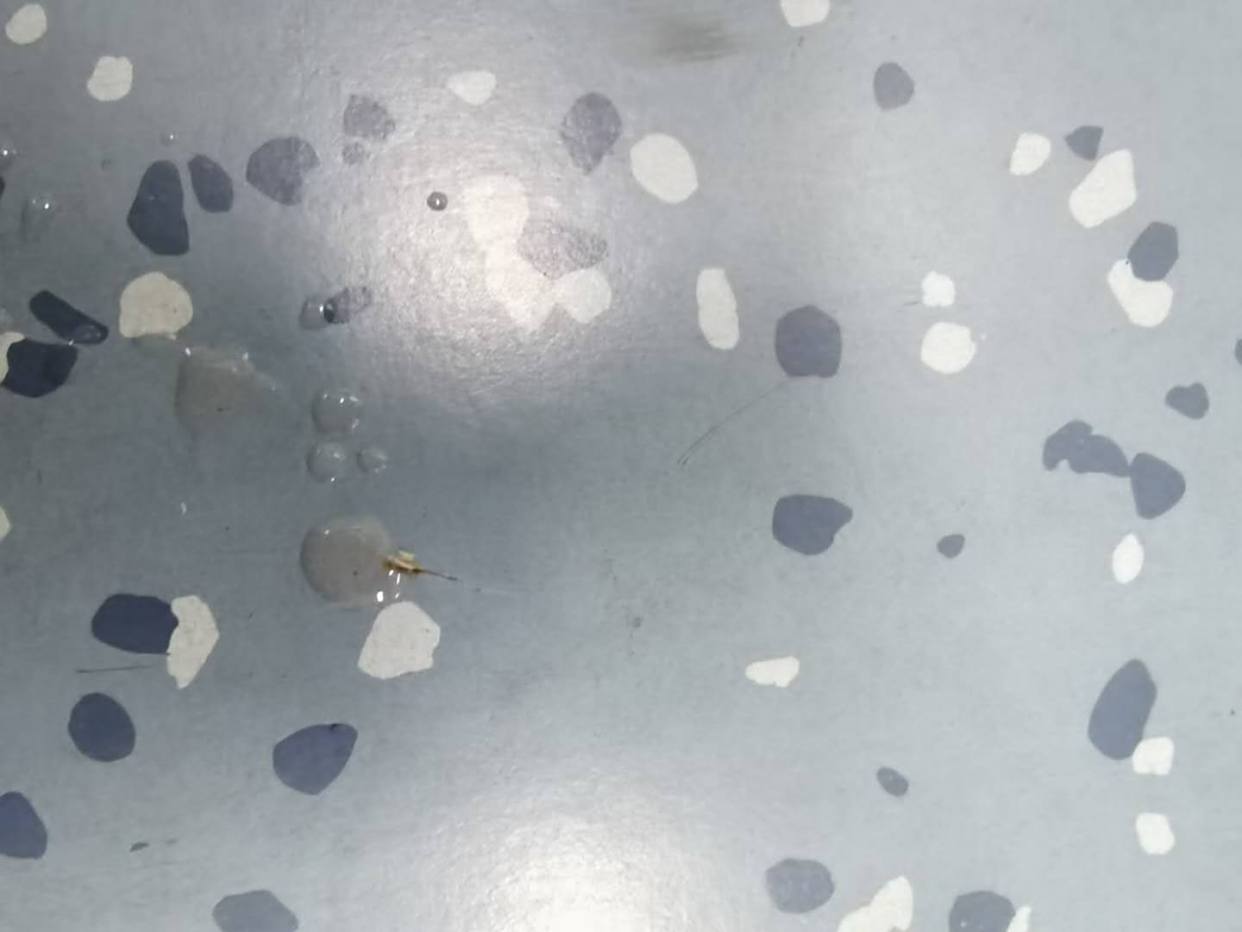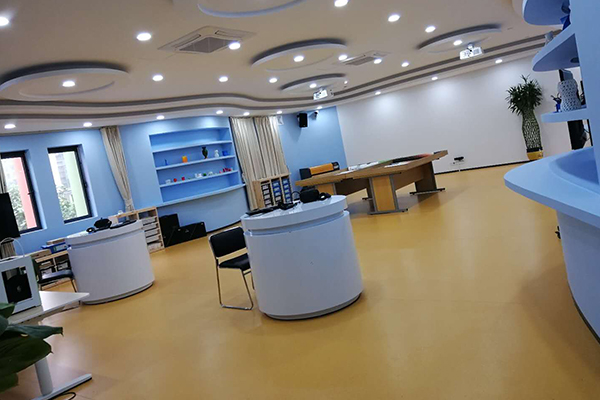PVC flooring has become a popular choice in residential, commercial, and industrial spaces due to its durability, water resistance, and ease of installation. Among its various forms, PVC flooring rolls are especially favored for large areas due to their seamless appearance. However, one of the most common and frustrating issues encountered is bulging—a defect that not only affects the aesthetics of the flooring but also its performance and longevity.
In this comprehensive guide, we will explore the underlying causes of bulging in PVC flooring rolls, how to diagnose them, and most importantly, how to prevent this costly and avoidable problem.

What Is Bulging in PVC Flooring?
Bulging refers to the localized or widespread swelling or lifting of the PVC floor surface after installation. It can appear as bubbles, ridges, or warped areas on the floor. Not only is it unsightly, but it also poses a tripping hazard and compromises the waterproof seal of the flooring.
This issue typically arises due to improper installation, unsuitable site conditions, or material incompatibility. Understanding the specific causes is the first step toward solving the problem.
When Might It Be a Flooring Problem?
Before blaming the installer or environmental conditions, it's essential to evaluate the flooring itself.
To determine whether the bulging is due to product quality, perform the following test:
Unroll the new PVC flooring roll on a perfectly flat, clean, smooth, and dry surface.
Let it rest in this state for at least 24 hours.
Ensure the ambient temperature is between 20°C and 38°C, with relative humidity not exceeding 75%.
If bulging still occurs, it may indicate a manufacturing defect. However, in most cases, bulging is caused by external factors.
Why Does PVC Flooring Bulge After Installation?
PVC is a flexible and thermoplastic material. That means it is sensitive to changes in temperature and moisture, making it more prone to expansion and contraction compared to traditional rigid flooring like ceramic tiles or hardwood.
So, how do you manage this expansion and contraction? And what external conditions contribute to bulging?
Let's dive into the 14 most common causes.

1. Subgrade Is Not Thoroughly Dry
The moisture content of the subgrade (concrete or cement screed below the floor) must be ≤3% before installation. If the subgrade is even slightly damp, it can release vapor that will rise and cause the self-leveling layer or adhesive to detach, leading to bulging.
Tip: Always use a moisture meter to verify subgrade dryness before laying any flooring.
2. Self-Leveling Layer Is Not Dry
Many mistakenly believe that the self-leveling compound dries completely in 24-48 hours. This is only true in ideal conditions. In real-life scenarios, drying time depends on layer thickness, ventilation, temperature, and humidity.
If the self-leveling is not fully dry when the PVC is installed, it will trap moisture and create blisters or bulges over time.
3. Dusty or Poor-Quality Self-Leveling Surface
A dusty or chalky self-leveling surface can result from:
Poor subgrade preparation
Low-quality self-leveling products
Environmental conditions such as low temperature or high humidity
This causes weak bonding between the adhesive and the subfloor, allowing the PVC to lift or bubble.
4. Incorrect Selection of Auxiliary Materials
Not all adhesives are created equal. Different types of PVC flooring require different adhesives, primers, and leveling compounds. Factors like climate, season, site usage, and flooring type must be considered.
For instance, in colder climates, using “thin glue” (known locally as sheet glue in China) may result in flooring failure when temperatures rise in spring.
Pro Tip: Invest in high-quality, compatible adhesives and never cut corners on materials.
5. Low Installation Temperature
PVC flooring should never be installed when the ambient temperature is below 5°C. At low temperatures, the glue doesn't bond effectively, and the PVC remains rigid, increasing the risk of future expansion-related bulging.
The optimal temperature for installation is between 18°C and 25°C.
6. Excessive Humidity
Humidity levels higher than 75% during installation can lead to moisture entrapment, weakening adhesive bonds and eventually causing floor deformation.
️ Keep humidity between 20% and 70% for best results.
7. Insufficient Pre-Laying Time
PVC rolls must be allowed to acclimate to the environment where they will be installed. This means pre-laying the rolls for 24 to 48 hours so that they expand or contract according to room conditions.
Skipping this step can cause sudden shifts or lifting once the room temperature changes.
8. Inappropriate Drying Time After Applying Adhesive
Different adhesives require different drying times before you lay the flooring on top. Applying the flooring too soon or too late after glue application affects bonding strength and leads to bubbles or separation.
Only an experienced and attentive installer will know how to adjust drying time based on:
Ambient temperature
Humidity
Subfloor type
Glue type
9. Inadequate Venting After Installation
After the flooring is placed, it must be vented properly to eliminate trapped air. This includes:
Sloppy venting results in air pockets that later manifest as visible bulges.
10. Inadequate Compaction
To ensure strong contact between the flooring and adhesive, it is recommended to roll the floor with a 50 kg roller two hours after installation.
Failure to compact properly can leave voids under the flooring, causing eventual detachment and swelling.
11. Premature Welding of Seams
For welded PVC floors (common in healthcare and commercial settings), wait at least 24 hours after installation before welding seams.
Welding too soon traps heat and moisture in the flooring, leading to bulging or bubbling along the seams.
12. Cracks in the Foundation
Cracks in the concrete base can transmit stress through the self-leveling layer, causing uneven surfaces and bulging once the PVC is laid.
⚠️ Always inspect for structural cracks and address them before continuing with the installation.
13. Incomplete Use of Adhesive (Spot Gluing)
Applying adhesive only in select areas to save on material is a common but serious mistake. Partial adhesion fails to control the flooring’s natural movement due to thermal expansion, leading to isolated bulging over time.
Always apply adhesive uniformly across the entire surface.
14. Improper Use or Post-Installation Exposure
After installation, improper use can also lead to bulging:
Direct sunlight heats and expands the PVC
Standing water or flooding weakens adhesion
Heavy furniture or machinery puts pressure on seams and weak points
Make sure to protect the flooring from these stressors immediately after installation.
How to Prevent Bulging in PVC Flooring?
Here’s a quick checklist for prevention:
✅ Ensure dry subgrade and self-leveling (≤3% moisture)
✅ Use proper primers, adhesives, and self-leveling compounds
✅ Maintain ambient temperature between 18°C–25°C during installation
✅ Keep humidity under 75%
✅ Allow 24–48 hours pre-laying time
✅ Follow correct adhesive drying times
✅ Vent thoroughly during installation
✅ Use a 50 kg roller for compaction
✅ Delay welding for at least 24 hours
✅ Avoid spot gluing
✅ Monitor post-installation conditions (sunlight, water, pressure)
Conclusion
Bulging in PVC flooring rolls may seem like a frustrating and complex problem, but with the right knowledge and preparation, it is entirely preventable. The key is understanding that every aspect of the installation process matters—from material selection and site preparation to temperature control and post-installation care.
PVC flooring is a flexible and efficient solution when installed correctly. By following the practices outlined in this guide, you can ensure a smooth, long-lasting, and visually appealing floor without the risk of future bulging.
Take your time, use the right materials, and work with professionals who understand the details. That’s the best insurance against flooring failure.
English
العربية
Français
Русский
Español
Português
Deutsch
italiano
日本語
한국어
Nederlands
Tiếng Việt
ไทย
Polski
Türkçe
አማርኛ
Bahasa Melayu
தமிழ்
Filipino
Bahasa Indonesia
magyar
Română
Монгол
қазақ
Српски
हिन्दी
فارسی
Kiswahili
Slovenčina
Slovenščina
Svenska
українська
Ελληνικά
Suomi
Հայերեն
עברית
اردو
Shqip
বাংলা
Hrvatski
Afrikaans
Māori
සිංහල
Oʻzbekcha
latviešu
Беларуская мова
Bosanski
Български
ქართული
Lietuvių
Malti











